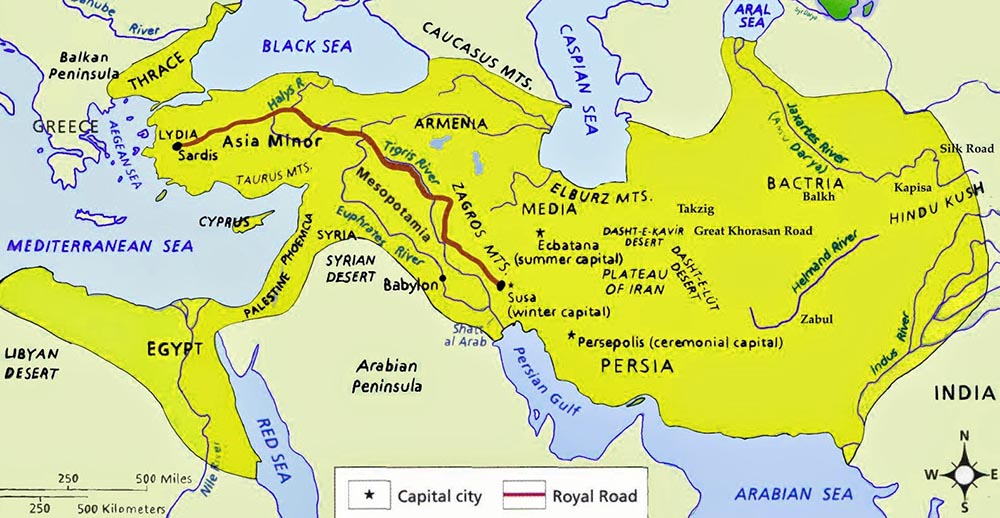The management of the Persian empire was centralized and organized as follows:
- Emperor
- The clerks, which in the Emperor’s name managed individual branches of central government’s finances, judiciary, and the military
- Personal Emperor Secretary – he was making Emperor’s decree
- The Judiciary – The judge is elected for lifetime function
- State inspectors
- The clerks who were accountants
Economy and Trade of the Persian country
The most important trade routes were:
- The caravan road, which is connected to the shore of the Persian Gulf.
- Roads from the valleys of the river Tigris in the east, from the eastern areas of Iran all the way to India
- From Mesopotamia goes an important trade route all the way in the valley of Diyala, in Medes, while from capital of the Medes (Ecbatana) led a major trade route to Susiana and in the valleys Kabul these road opened the way to India.



Minting of the gold monete, he declared exclusively to be the right of the central government. Local rulers and managers of certain areas and cities were given the right to mint silver and copper coins. Darius I determined the extent of tax that certain areas had to pay to the imperial treasury in accordance with its economic development. Road construction was of great importance for trade. For this purpose, the Persians used a large number of ancient Hittite and Assyrian roads adapting it to the needs of the army, trade, transport of mail. In the various areas of Iran were gold, silver and lead.
The existence of metal ores contributed to the development of metallurgy. They used carriages. Great highway so called Royal road: went from the Aegean coast of Asia Minor to the Mesopotamia. The road went from Ephesus to Surda and Susa, over the Euphrates, Armenia, Assyria all the way to Tigris. Medes people as well as other Iranian tribes that settled in the west of Iranian plateau lived pastoral way of life. Their main economic activity, since the time when they lived together with ancient Indo-Aryan cousins in the steppes east of the Caspian Sea, was the livestock or breeding horses, cattle, sheep, goats and rarely domestic goats. They were known as the best horse breeders of their time; even before their settlement in the Zagros Mountains their horses were known in Mesopotamia. They were skilled in metallurgy, particularly in the processing of iron, so they made the strongest and fastest chariot of that time.
